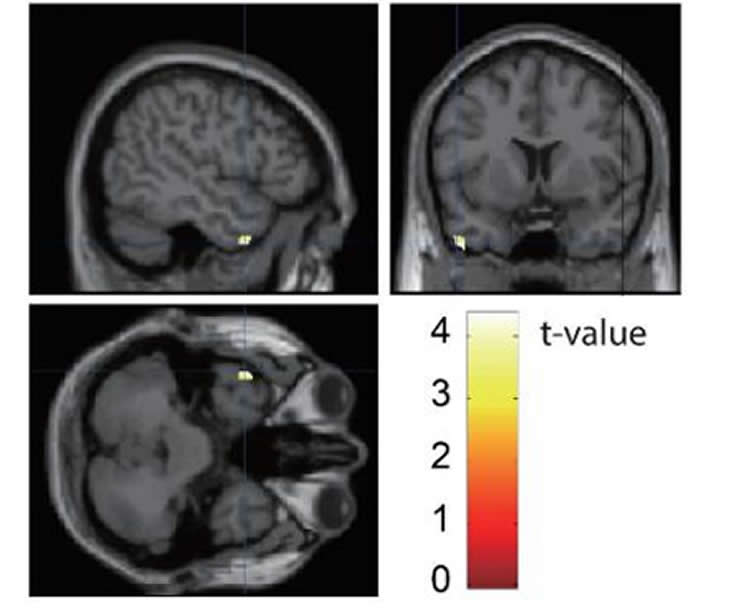Implications for the development of new treatment strategies for neuropsychiatric disorders.
A research group led by Osaka University and the University of Tokyo found that the intracellular protein trafficking is important for higher brain functions such as learning and memory. The research group showed that a molecule, ARHGAP33 regulates synaptic functions and behaviors via intracellular protein trafficking and that the lack of ARHGAP33 causes neuropsychiatric disorder-related impaired higher brain functions.

Takanobu Nakazawa, Specially Appointed Associate Professor at Osaka University, Masanobu Kano, Professor at The University of Tokyo, and Ryota Hashimoto, Associate Professor at Osaka University generated ARHGAP33 knockout (KO) mice to examine the function of ARHGAP33. The research group found impaired spine development and decreased miniature excitatory postsynaptic current frequency and amplitude in ARHGAP33 KO mice. The research group also found that ARHGAP33 KO mice show impaired working memory and prepulse inhibition, both of which related to neuropsychiatric disorders, such as schizophrenia.
Then, the research group examined the molecular mechanism behind the impaired synaptic functions and behaviors in ARHGAP33 KO mice and found that ARHGAP33 is localized to the Golgi apparatus to regulate intracellular protein trafficking of the Tropomyosin receptor kinase B (TrkB) receptor, a neurotrophin receptor, to synaptic sites. Neurotrophins play important roles in the formation and function of synapses. In ARHGAP33 KO mice, TrkB is not sufficiently transported to synaptic sites due to the lack of ARHGAP33, which eventually leads to impaired synaptic functions and behaviors.
Finally, the group found that the human ARHGAP33 is associated with schizophrenia (see Figure).
The molecular pathophysiology of neuropsychiatric disorders is still not well understood, and the development of new antipsychotic drugs is imperative. The group’ finding that the impaired intracellular protein trafficking leads to neuropsychiatric disorders-related abnormal higher brain functions has high impact on the fields of psychiatry, basic medical sciences, and pharmaceutical sciences. This study can potentially contribute to the development of new treatment strategies for neuropsychiatric disorders, such as schizophrenia.
Funding: This work was supported by Grants-in-Aid for Scientific Research from the Japan Society for the Promotion of Science, Grant-in-Aid for Scientific Research on Innovative Areas.
Source: Saori Obayashi – Osaka University
Image Source: The image is credited to Takanobu Nakazawa (Osaka University) et al.
Original Research: Full open access research for “Emerging roles of ARHGAP33 in intracellular trafficking of TrkB and pathophysiology of neuropsychiatric disorders” by Takanobu Nakazawa, Ryota Hashimoto, Kazuto Sakoori, Yuki Sugaya, Asami Tanimura, Yuki Hashimotodani, Kazutaka Ohi, Hidenaga Yamamori, Yuka Yasuda, Satomi Umeda-Yano, Yuji Kiyama, Kohtarou Konno, Takeshi Inoue, Kazumasa Yokoyama, Takafumi Inoue, Shusuke Numata, Tohru Ohnuma, Nakao Iwata, Norio Ozaki, Hitoshi Hashimoto, Masahiko Watanabe, Toshiya Manabe, Tadashi Yamamoto, Masatoshi Takeda and Masanobu Kano in Nature Communications. Published online February 3 2016 doi:10.1038/ncomms10594
Abstract
Emerging roles of ARHGAP33 in intracellular trafficking of TrkB and pathophysiology of neuropsychiatric disorders
Intracellular trafficking of receptor proteins is essential for neurons to detect various extracellular factors during the formation and refinement of neural circuits. However, the precise mechanisms underlying the trafficking of neurotrophin receptors to synapses remain elusive. Here, we demonstrate that a brain-enriched sorting nexin, ARHGAP33, is a new type of regulator for the intracellular trafficking of TrkB, a high-affinity receptor for brain-derived neurotrophic factor. ARHGAP33 knockout (KO) mice exhibit reduced expression of synaptic TrkB, impaired spine development and neuropsychiatric disorder-related behavioural abnormalities. These deficits are rescued by specific pharmacological enhancement of TrkB signalling in ARHGAP33 KO mice. Mechanistically, ARHGAP33 interacts with SORT1 to cooperatively regulate TrkB trafficking. Human ARHGAP33 is associated with brain phenotypes and reduced SORT1 expression is found in patients with schizophrenia. We propose that ARHGAP33/SORT1-mediated TrkB trafficking is essential for synapse development and that the dysfunction of this mechanism may be a new molecular pathology of neuropsychiatric disorders.
“Emerging roles of ARHGAP33 in intracellular trafficking of TrkB and pathophysiology of neuropsychiatric disorders” by Takanobu Nakazawa, Ryota Hashimoto, Kazuto Sakoori, Yuki Sugaya, Asami Tanimura, Yuki Hashimotodani, Kazutaka Ohi, Hidenaga Yamamori, Yuka Yasuda, Satomi Umeda-Yano, Yuji Kiyama, Kohtarou Konno, Takeshi Inoue, Kazumasa Yokoyama, Takafumi Inoue, Shusuke Numata, Tohru Ohnuma, Nakao Iwata, Norio Ozaki, Hitoshi Hashimoto, Masahiko Watanabe, Toshiya Manabe, Tadashi Yamamoto, Masatoshi Takeda and Masanobu Kano in Nature Communications. Published online February 3 2016 doi:10.1038/ncomms10594






